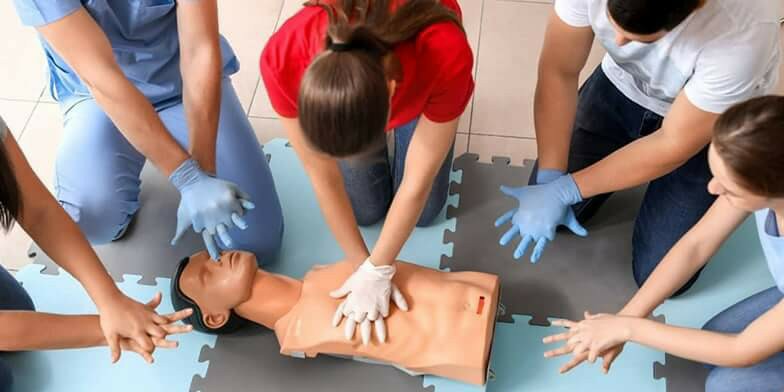Essential First Aid and CPR Training: A Workplace Necessity for Safety and Compliance
In today's fast-paced business environment, prioritizing workplace safety is more crucial than ever. One of the most effective ways to safeguard your team and ensure compliance with health regulations is through comprehensive First Aid training and CPR certification. This blog post delves into the importance of these training programs, the skills employees acquire, and how such certifications can protect everyone involved.
Why First Aid Training is Crucial for Workplace Safety
Every workplace, regardless of its nature, faces potential emergencies. From minor injuries to sudden health crises, employees should be prepared to respond effectively. First Aid training and CPR certification equip individuals with essential skills that can make a difference between life and death. Here's why the investment in these programs is fundamental:
- Immediate Response: First Aid training provides employees with the knowledge to act swiftly in emergencies, minimizing injury severity and improving recovery chances.
- Risk Reduction: Understanding basic First Aid principles helps in recognizing hazards and preventing workplace injuries.
- Increased Confidence: Employees feel empowered and confident in their abilities, which fosters a supportive and safer work environment.
Key First Aid Skills Every Workplace Must Prioritize
To enhance workplace preparedness, certain First Aid skills should be prioritized in training:
- CPR Techniques: Knowing how to perform CPR can save lives in case of cardiac emergencies. This includes chest compressions and rescue breaths.
- Choking Relief: Training employees on how to assist someone who's choking can prevent fatalities.
- Wound Care: Basic wound management techniques can prevent infections and promote faster healing.
- Verbally directing assistance: Training also includes how to call for help effectively and provide information to emergency responders.
Understanding CPR: Life-Saving Techniques Every Employee Should Know
Cardiopulmonary resuscitation (CPR) is a critical skill that can save lives if administered promptly. Employees trained in CPR can lead or assist in an emergency situation until professional help arrives. Key components of CPR training include:
- Recognizing Cardiac Arrest: Employees learn to identify the signs of a heart attack and the appropriate responses.
- Effective Chest Compressions: Proper technique for chest compressions that maintain blood circulation.
- Use of Automated External Defibrillators (AED): Many First Aid training courses now cover how to use AEDs, enhancing survival chances during cardiac emergencies.
Regulatory Compliance and Workplace First Aid Requirements
Many jurisdictions mandate specific First Aid training requirements for businesses to promote health and safety. Understanding and adhering to these regulations can help avoid legal issues and foster a safer workplace. Typically required components include:
- Designated First Aiders: Employers should appoint trained individuals who can respond in emergency situations.
- First Aid Kits: It’s essential to have well-stocked First Aid kits accessible in multiple locations within the workplace.
- Regular Training Updates: Regular refreshers or recertification courses ensure skills remain sharp and up to date.
Benefits of First Aid Certification for Businesses and Employees
Investing in First Aid training and certification can yield numerous benefits for both employers and employees, including:
- Enhanced Employee Safety: Reducing harm and improving overall employee welfare
- Improved Workplace Morale: A safe working environment fosters employee confidence and satisfaction.
- Increased Productivity: Employees who feel safe are likely to be more productive in their tasks.
- Legal Protection: Ensuring compliance with safety regulations shields businesses from potential legal repercussions.
Emergency First Aid Procedures: Step-by-Step Guidelines
In the heat of the moment, knowing how to respond efficiently is critical. Here are basic steps for some common situations:
1. Choking
- Determine if the person can breathe or cough.
- If not, perform abdominal thrusts until the object is expelled or professional help arrives.
2. Bleeding
- Apply direct pressure to the wound using a clean cloth.
- If bleeding doesn’t stop, add more cloths and seek help.
3. Cardiac Arrest
- Call for emergency services immediately.
- Begin CPR and use an AED as soon as available.
Choosing the Right First Aid Course: Online vs. In-Person Training
In the digital age, options for First Aid training are more accessible than ever. You can choose between traditional in-person classroom sessions and online First Aid courses. Here’s how to decide which form is best for your team:
- Flexibility: Online courses often provide flexible schedules that allow learning at one’s pace.
- Hands-On Practice: In-person training can be essential for mastering practical skills.
- Compliance: Ensure that whichever method chosen meets regulatory requirements.
Final Call to Action: Enroll Your Team in Certified First Aid & CPR Training Today!
Don’t wait for an emergency to highlight the need for First Aid training in your workplace. By investing in First Aid and CPR certification, you are not only ensuring compliance with safety regulations but also fostering a culture of preparedness among your employees.
Contact us today at [email protected] to learn more about our First Aid courses available and start creating a safer workplace for everyone.



 349,500 Offered Certificates
349,500 Offered Certificates
 24/7 Online Training
24/7 Online Training
 Money Back Guarantee
Money Back Guarantee
 Fully Accredited Courses
Fully Accredited Courses
